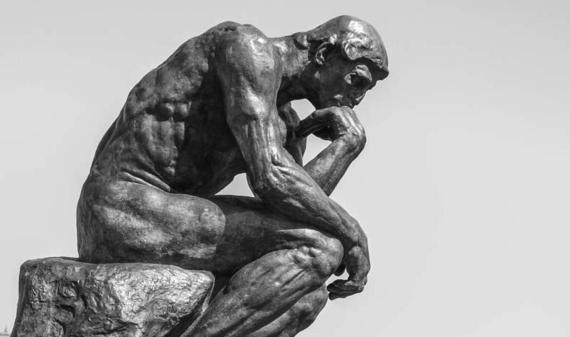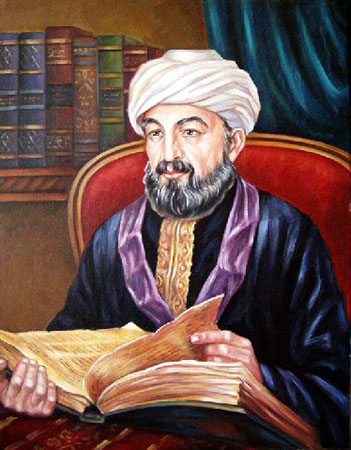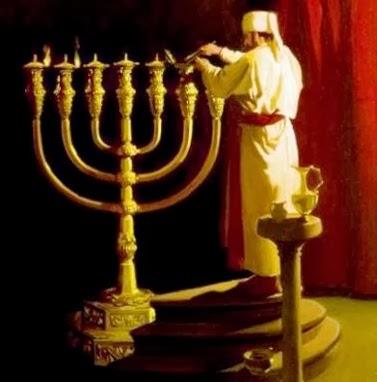Click here to download PDF
לע״נ האשה החשובה מרת יענטא בת ר׳ שלמה ז״ל
לרפואת ר׳ שלום יהודה בן גנעשא שליט״א בתשח״י
Where are the Blessings?
The parsha opens (11:26) “See (singular) I place before you (plural) today blessing and curse.” After mentioning that the blessing is for obeying Hashem and the curse if for violating His Will and instructing us to place the blessings on Mount Gerizim and the curse on Mount Aival the discussion ends! Those blessings and curses are not specified. 16 chapters later, in the middle of parshas Ki-Savo (27:11-26) those blessings and curses are spelled out. Why did the Torah split up introducing the idea of the blessings and curses from spelling them out?
Why “See”? Why “Today”?
The pasuk says “See (singular) I place before you (plural) today blessing and curse.” There are many difficulties in this very short sentence. Moshe is talking and describing something, there is nothing to “see”! He should have said “Hear I place before you…”! Moshe says “see” in singular form, even though he’s talking to the entirety of the Jewish people(!), and mid-sentence he switches to plural form “… before you (plural)…”. Why did he say “see” and why did he say it in singular form? Moshe says “today”. The Torah does not write unnecessary words. We always learn something from the extra word “today”. For example: When this term is used over and over again in parshas Ki-Savo we learn from it that a person should always view his Mitzvahs as “new” – as if “today” it was commanded. What does “today” come to teach us in this pasuk?
“Seeing”
What does it mean to “see” as opposed to “hear”? What is the difference between information that is seen versus information that is heard? Seeing is the most objective sense we have. You “see the whole picture”. You see multiple things simultaneously. Even if you’re looking at just one object you see that object and you see its background behind it. “Seeing is believing” but doesn’t mean “understanding”. When the witnesses give their testimony, we are purely concerned with what they saw. We do not want to hear any of their “opinions” or “commentary”, we just want the raw facts. That’s why it’s possible to have two Witnesses say the exact same thing, despite what Chazal tell us “just as all people’s faces are different so also their opinions are different” (Berachos 58b). We’re only interested in the objective visible facts, as opposed to their understanding. “Seeing” in the pure sense is observing from the outside. The person who was involved in the event, even if he’s not blind, will process and remember the event based on what it felt like and how it affected him, and therefore is disqualified from being a witness.
Hearing & Understanding
Hearing is also known to be a synonym for understanding. The Dayanim (judges) that hear the testimony develop their own individual opinions as how to process the testimony, and the final ruling is in according to the opinion of the majority. The Halacha for someone who is deaf from birth and never heard in his life (in the days before the breakthroughs in education of the deaf – for the Halacha in this day and age consult your local Orthodox Rabbi) is considered to be mentally incompetent, like a minor, and not responsible for his actions. They lack the understanding of virtue and ethics which is something that’s taught and can’t be simply observed. Just like everyone’s understanding is individualized and subjective to their particular mentality so also hearing is separate and distinct “two voices cannot be heard simultaneously as when Hashem said both versions of Aseres HaDibros simultaneously it was something that no mouth can speak, and no ear can hear” (Rosh Hashana 27a). “Seeing” is objectively factual, encompassing, external, and ‘shallow’. “Hearing” has depth and understanding but it is individualized and therefore partial and subjective.
One cause – two effects
The Gemara says (Nedarim 8b) “….in the future Hashem will remove the Sun from its ‘sheath’ [and there will be fantastic rays] the Tzadikim will get healed by it and the wicked will be punished by it”. The outside Observer witnessing this great event can see in one glance the whole picture that contains seemingly irreconcilable opposites. He sees one Source, emanating one type of ray, and two people at the same place and the same time get affected differently . One gets tremendous benefit and the other one gets tremendous pain and loss. Easy to observe from the outside, but not easy to understand. Anyone within the experience will process the experience only as it felt to him. The one who experienced pleasure cannot imagine that this could possibly bring pain on to anyone. The one who experienced pain cannot imagine that these energies could ever bring pleasure to anyone. The Navi (Yeshayahu 45:7) says: “ …Fashions light and creates darkness makes peace and creates evil I am Hashem who does all this”. We have to believe there’s only one Creator who is the one and only source of all. We also have to believe, as we are taught by the Torah, that Hashem only wants the “good”. How do we understand the “bad”? How does it come from the singular omnipotent Divine Will to bestow “good”?
One Plan
The Ramchal in his essay entitled “Derech Etz Chaim” (which was to be an introduction to his Monumental work “Klach pischei chochma) explains: Hashem’s Will is only to do good and to bestow goodness. Goodness is not limited to “being nice”. If there is a deadly mutation that needs to be removed, then painful treatment is necessary to get rid of that bad thing that needs to be vanquished – and that is in itself and act of goodness! Withholding medical treatment to avoid pain or being kind to the wicked so they could continue to wreak havoc is not good in the absolute sense – because the world as a whole suffers! “Good” is to be measured buy an objective cosmic measure – what is good for reality as a whole? The same infinite power that wants only to bestow goodness is very same infinite power that vanquishes evil. To vanquish evil and to bring pain upon the evil doers who deserve it and need atonement is what is good for reality as a whole.
Why is Providence called “Shomayim”-Heaven?
With this the Ramchal explains why we refer to Hashem’s Providence as “Shomayim”- heavens. We say, “everything is ‘Min HaShomayim’ -from heaven”, and more particularly “Davdin min Shemaya letav”- what’s done from heaven is for the good. Why ‘heaven’? The Ramchal explains: The celestial bodies are a metaphor to help us understand how one consistent Source can have a myriad of different effects! The celestial bodies are in set orbits that repeat themselves over and over again. The celestial bodies never do anything different and yet the celestial bodies have caused different effects on the world that is influenced by them. The weather changes constantly and no two years are exact duplicates of each other, even though the orbits have not changed. The cause is always doing the same thing all the time, the difference in the effects manifest in the receivers. To give a metaphor of my own: Turn an oven on to a high temperature and put in three objects: An Ice Cube, a piece of paper, and a liquid cake batter. The oven is radiating the same heat to all three objects simultaneously. The paper will catch fire, the ice will melt, and the cake batter will rise and get hard. The oven just did one thing, it gave off heat, and these three objects were affected differently. The differences are not in the oven or its heat, the differences are in the receivers. Each one reacts differently to the heat. The unchanging celestial orbits are doing their regimented duty, all changes are in the receivers. That’s why it’s the metaphor for Divine Providence. The righteous receive benefit from Hashem’s “energy” that is being emanated to bring the world to Perfection. The evil ones have positioned themselves so that the very same “energy”, which is to move the world to Perfection, hurts them and maybe even kills them – because they have to either get their atonement or if necessary be removed for the world – for the good of the world! Therefore, the “good energy” affects the evil ones that way because of what they have made of themselves.
Getting our heads around what we see
This this may be very easy to say, but difficult to internalize. The outside observer will “see the whole picture”– a person living through it will have a hard time “seeing both sides of the picture”. On the other hand, as Lucid as our philosophical explanations may be, no one is going to accept them as fact unless someone actually sees that this is the case. We need the “seeing” to establish the facts and afterwards we may Supply the explanations. After seeing that everything is from Hashem’s will to bestow goodness, how can we really internalize and understand that the good and bad events in life, the blessing and the curse, all come from the same source and are both equally for our benefit?
“Today”
The daily orbit gives us a 24-hour day which is half night half day and both halves are equally part of the day. The new day starts at night and the darkness leads to light. This represents that the hard times are there for our benefit and give way to the good times. The hard times challenge us to grow, give us atonement for our sins, and leads into the good times. This is how Rashi interprets the use of the word “Hayom”- today in Parshas Nitzavim. “You are all standing today before Hashem….” Rashi explains that the Jews needed reassurance because they heard all the curses in parshas Ki-Savo. Moshe says: “this is the way the day works, it is dark and then light. So also, Hashem is destined to give you light…” meaning to say that the curses that you’re worried about are part of the daily 24-hour cycle and it actually starts with the hard times which give way light, Purity, and pleasure.
Decoding the Pasuk
We can now answer all our questions. Moshe in this week’s Parsha is talking about understanding the basic reality of blessing and curse. The detailed blessings and curses will be discussed 16 chapters later. To understand that blessing and curse come from the One same source – which is established by “seeing” as it perceives all sides of the picture simultaneously. That’s why Moshe opens with “See”– singular, seeing that there is one Creator, one will that executes the one and only agenda of bringing the world to perfection. “….before “you”-plural today blessing and curse” – meaning: it is in “you”-plural i.e. because of the differences between yourselves as some are righteous and some less so that there is a blessing and curse. How do you reconcile intellectually and emotionally that the singular will to bestow goodness makes good and bad? “….today blessing and curse” – like the day that is made up of two parts, night and day, reality is not whole without the dark and the light. If there were no programming to remove evil from the world, the cosmos would never attained perfection! The hard times are just as necessary as the good times, like the parts of the daily cycle. This will be the case so long as man has free will to choose between good and evil, as Moshe continues “…The blessings are for obedience and the curses are for insubordination..” The world will not be complete unless there is Judgement and punishment to excise the evil from the individual or the evil doers from. This is what insures that the world will attain complete perfection despite man’s ability to choose evil.








